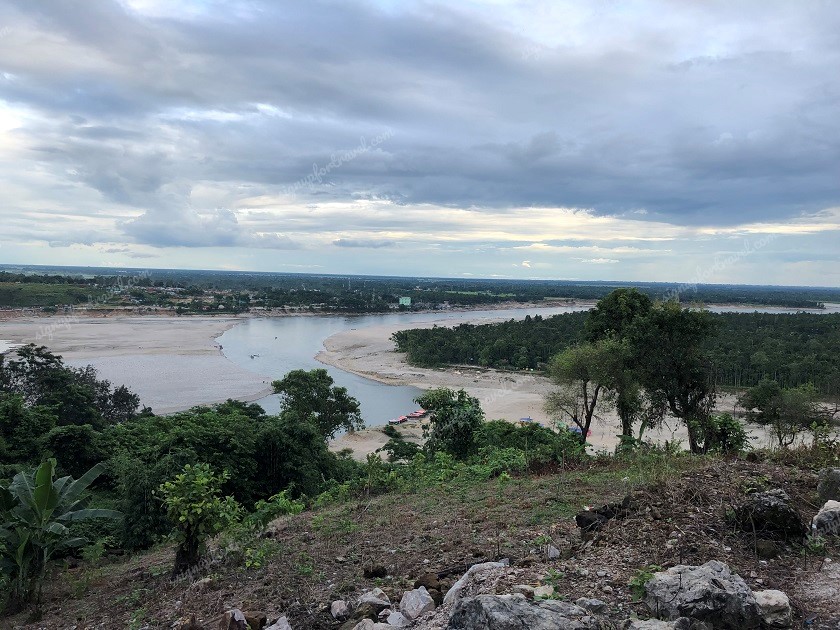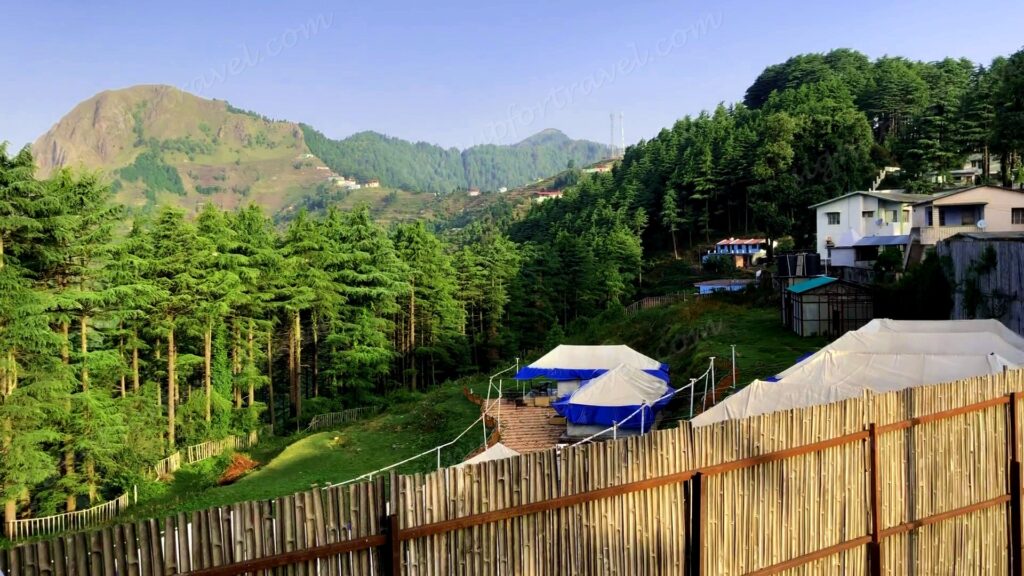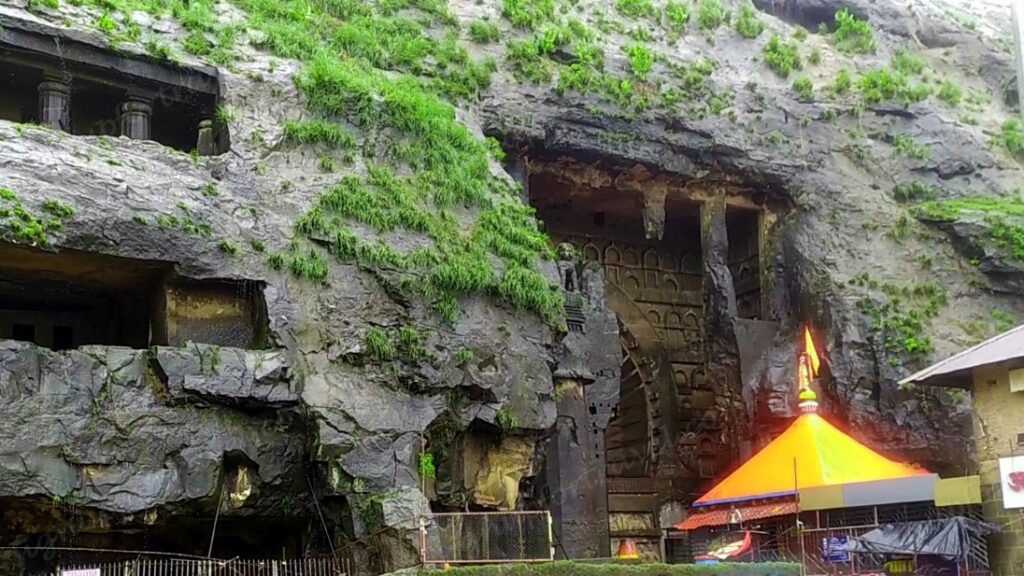Start the day with a view
At the end of Day 7, we ended up at an out-of-budget hotel named La Shisha but then we were happy to not have to call off our trip. The room was generously big and had a comparable bathroom as well justifying the big bucks paid. We had our breakfast at 9 AM and just lazed around the hotel. The location of the hotel was remote, away from the madness of Police Bazaar and the views were great as well.
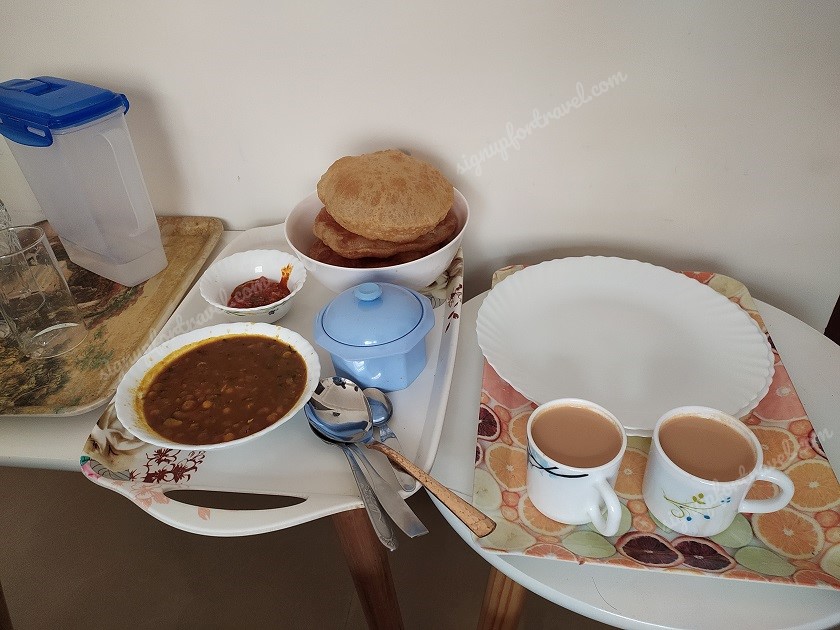
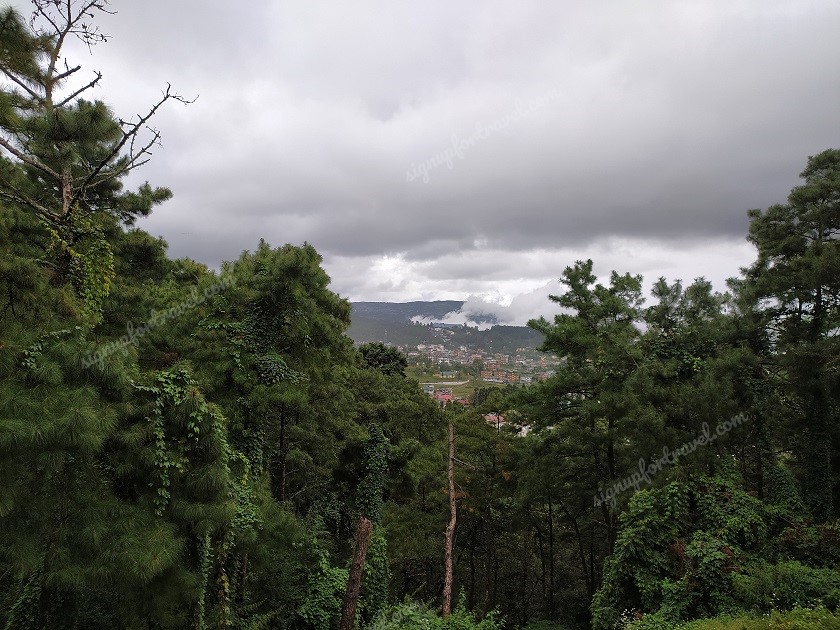
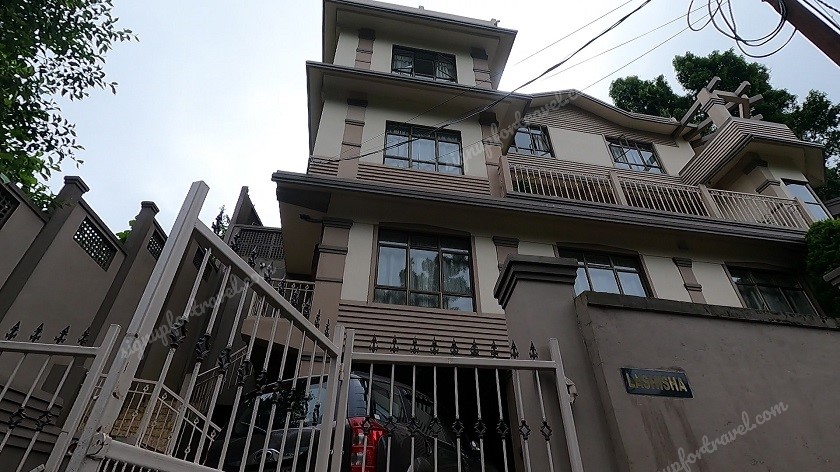
On the road
We did some research the previous day on the hotel options and the route, but most of it remained largely unknown. The weather had been forgiving so far but not today, as it remained mostly cloudy with intermittent showers in certain places.
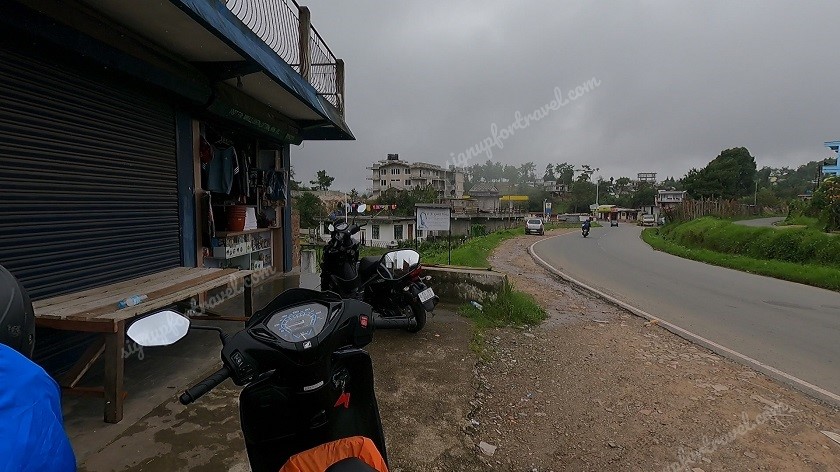
En route, it became obvious why Meghalaya is so-called and it literally translates into ‘abode of clouds’. At certain patches, there were thick clouds that obscured the roads and the numerous streams and waterfalls that lay along the route. Only the roar of water could be heard.
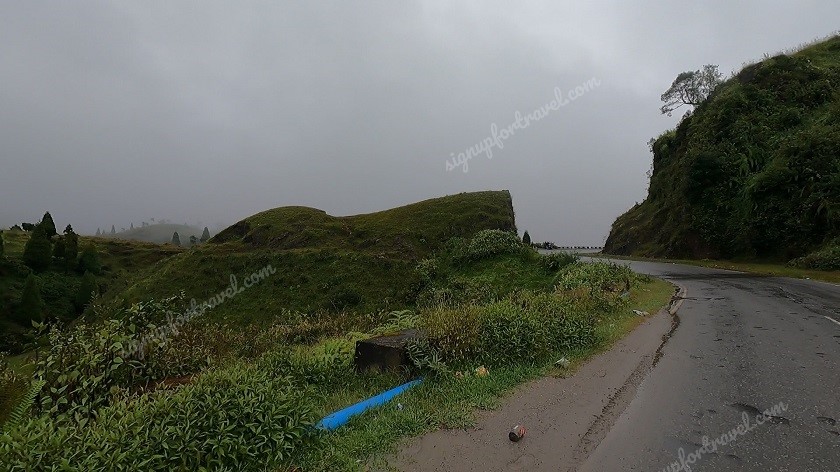
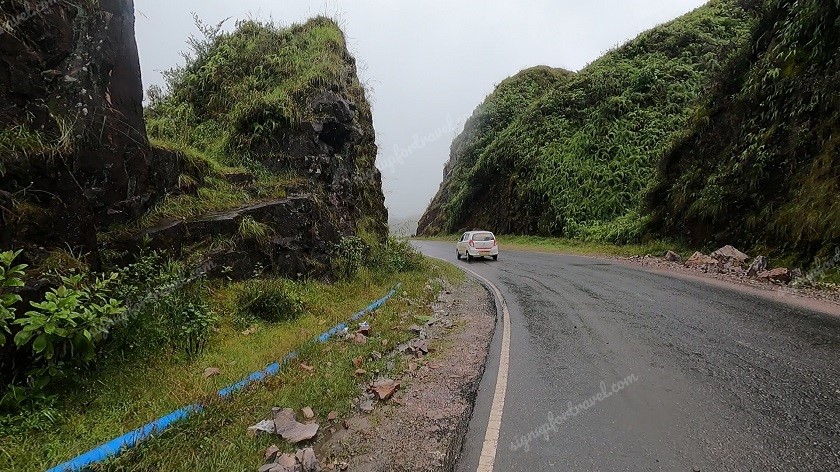
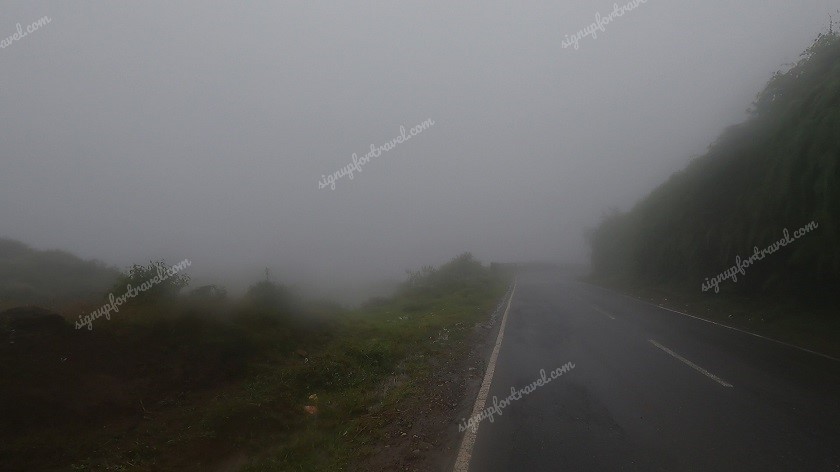
Bad Roads
The hills of Meghalaya are unique in the sense that most of them do not have peaks. The torrential rains over the years seem to have eroded the summits. What now remains are high plateaus. Our scooter inched towards Pynursula, which is a major town near the border. Here you will find the hustle and bustle of a small town having a busy market. It even has an HDFC bank branch and ATM, though it was not functioning when we made a stop at it to withdraw some cash on the way back.
By the time we crossed it, the weather had cleared and moisture from the soil had started evaporating creating a humid condition. Till Pynursula, the road is passable, but after that conditions deteriorate significantly. The road is mostly made up of loose rocks and red soil till about Pongtung.
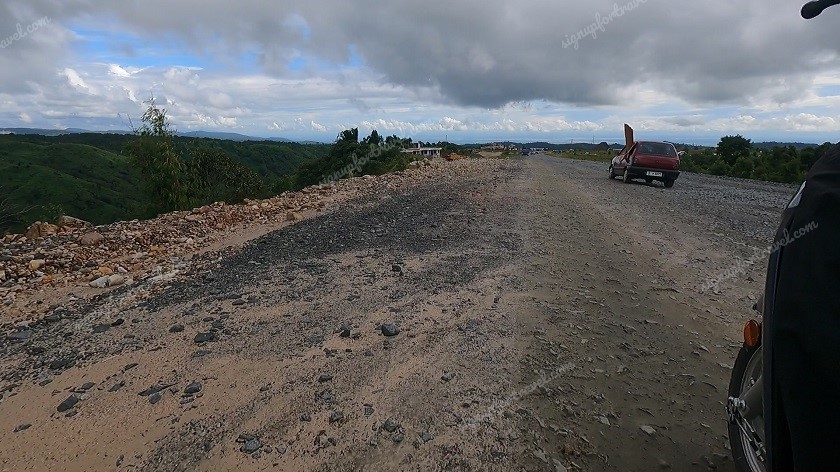
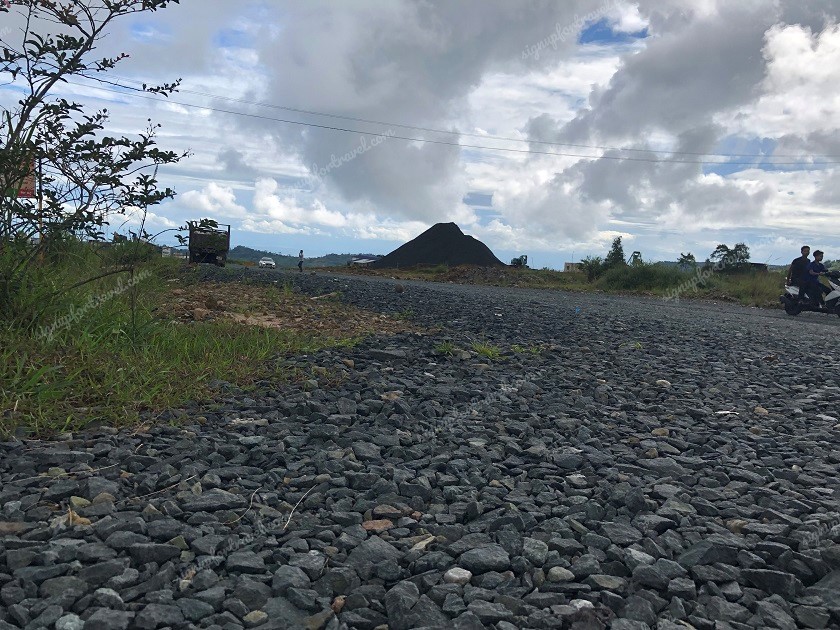
Break for Lunch
After riding for some time on the bad roads, we were exhausted. Riding a pillion with luggage on a scooter was itself a task and the pain become more pronounced on bad roads, so we decided to halt for lunch. Just before Pongtung, the commercial activities had thinned significantly, and we could find only one restaurant which was worth a visit. The time was 2 PM.
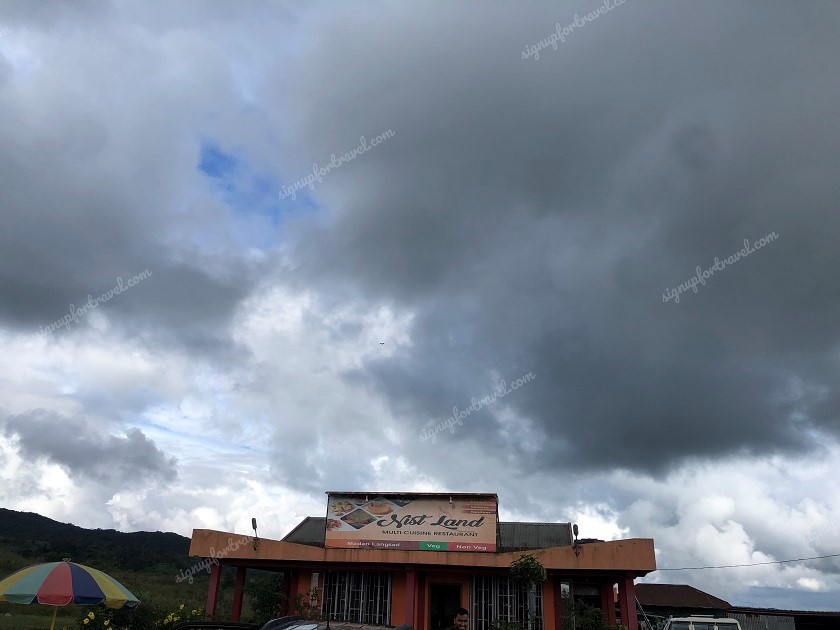
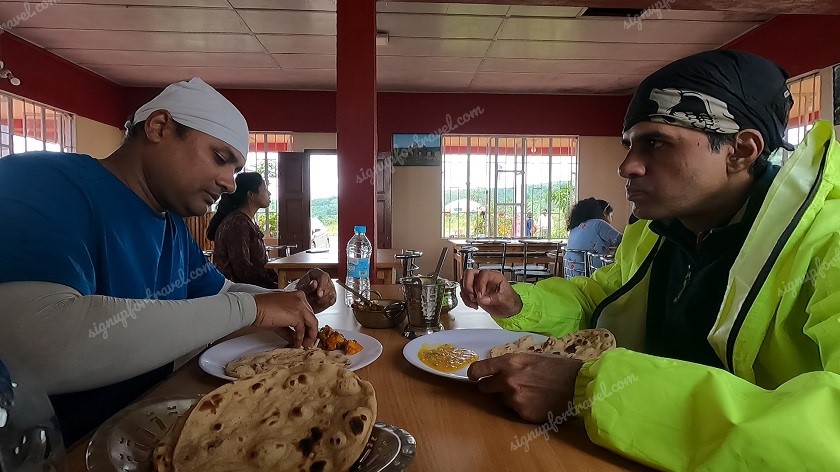
Hotel at Pongtung
We enquired about places to stay at the restaurant where we had lunch and got suggestions about a place called Pongtung. After a sumptuous lunch comprising of the usual items, our journey resumed and soon came Pongtung.
This was going to be our halt for the night. Our luck favoured us and we could arrange a fabulous stay at a resort, which also had a golf course and a swimming pool. It was kind of unnamed but for readers of this blog who would like to check out the place, it is just adjacent to a guest house, which goes by the name of DELI-BAIAR GUEST HOUSE. We had a cottage to ourselves that day and the stay was comfortable. Our arrival at 3 PM meant that we could keep our luggage at the hotel and dart out to Dawki to check out the famous Indo-Bangladesh friendship border.
Road to Dawki
We got onto the scooter and headed downhill towards Dawki, which is 20 km from Pongtung. The scenery as with any other place in Meghalaya just kept getting better.
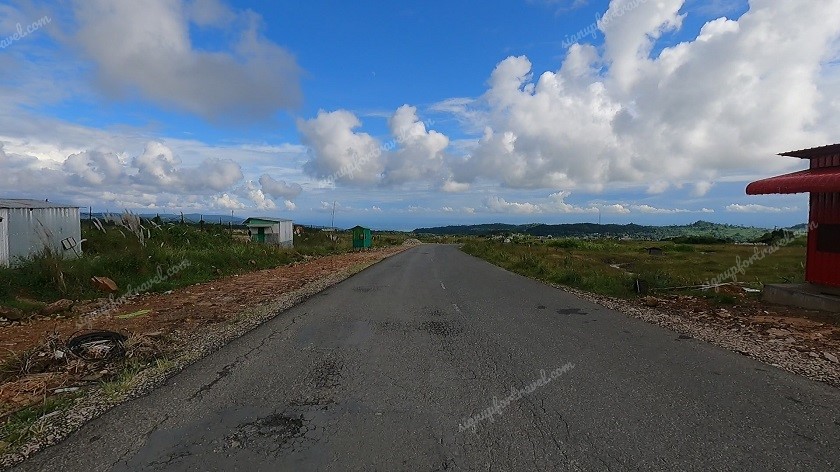
As we moved along on this road, we caught the first glimpse of the Bangladesh plains. On a clear day, the plains are visible to a great distance and the view resembles one out of an airplane window of the ground below. The greenery and the river systems of Bangladesh are visible, and the view is mesmerising.
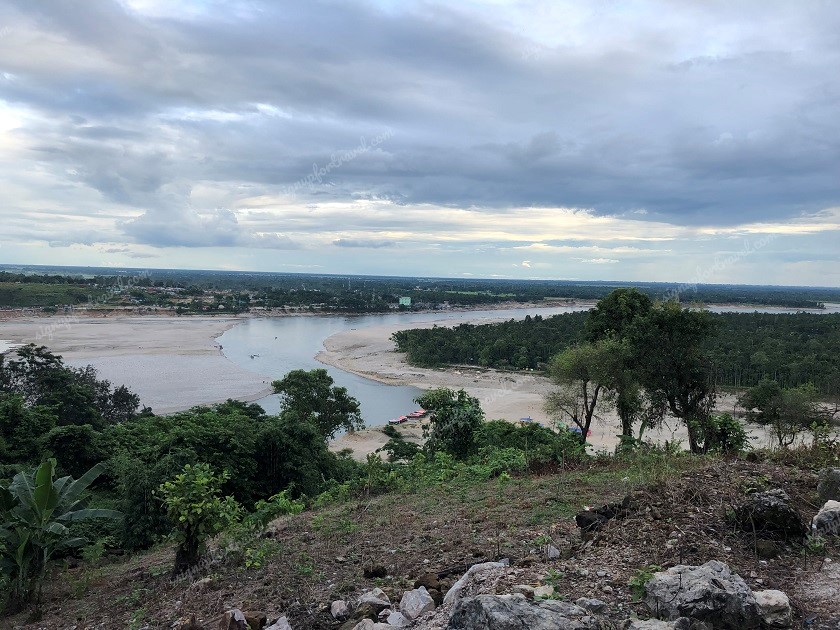
The road was in pathetic condition and there was a lot of stone chip trade going on across the border. Bangladesh has soil that is almost entirely made up of silt with little or no rocks or granite. Hence, it became obvious to us that the huge quantities of chips being quarried and exported out of Meghalaya were intended to be used as building construction material. One can find workers, who happened to be women in general, hammering away at blocks of stone with their chisels to break them into stone chips every few km alongside the highway.
Crossing the Umngot or the Dawki River
As soon as we neared the Dawki River, there was a huge traffic jam waiting for us. The huge influx of tourists, a narrow road and truck movement was a perfect recipe for a jam. We tried to play by the rules and waited for a good amount of time with other vehicles, mostly cars. Being on a two-wheeler, we soon filtered through the traffic and were at the entrance of the bridge.
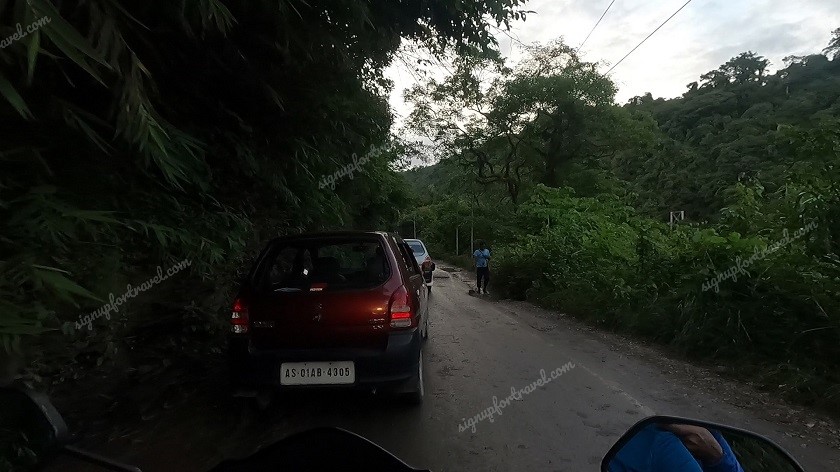
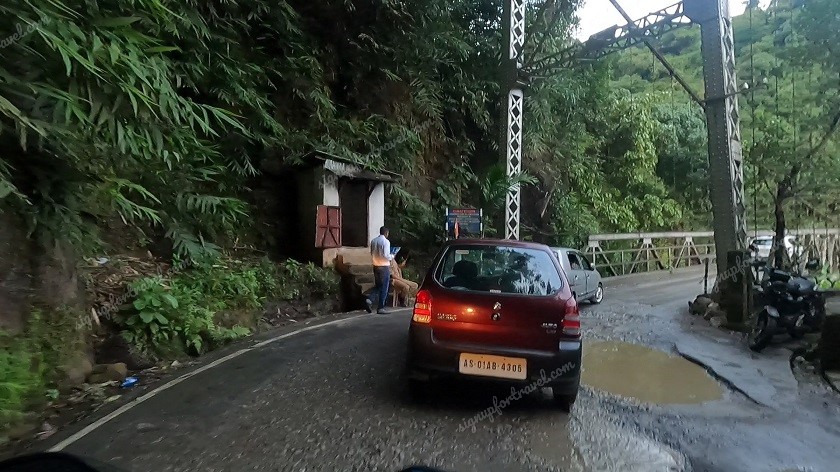
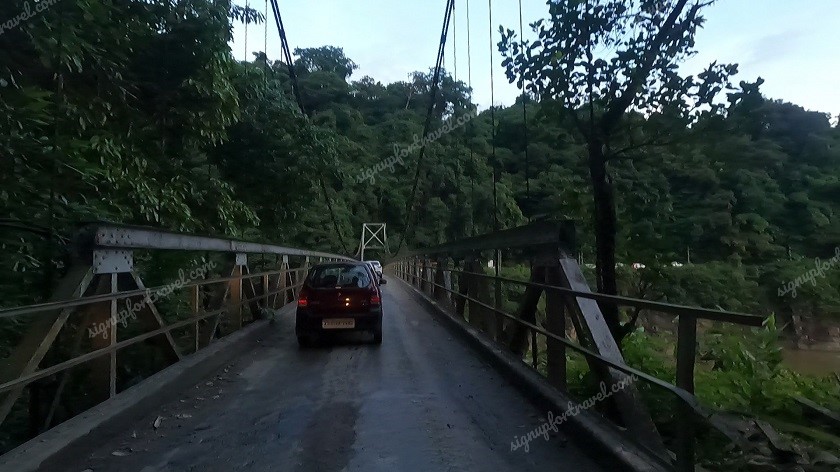
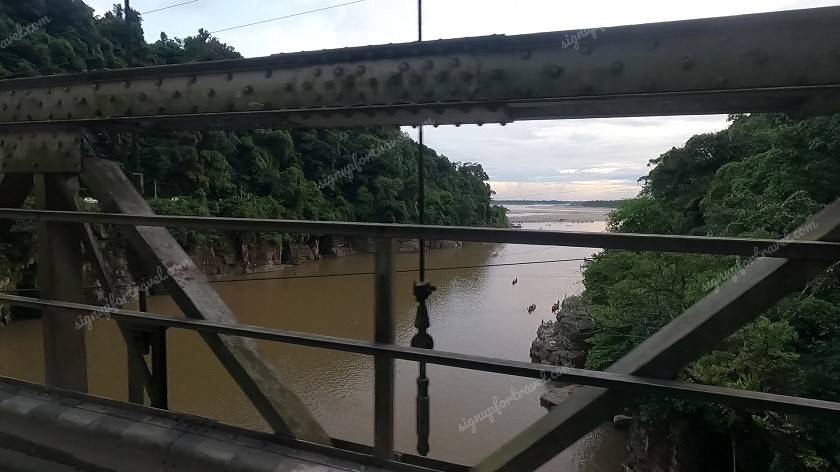
The bridge is really old and of the British era. Only one car can pass it at a time. The Umngot river flowing below made its way from the hills and into Bangladesh plains. We were so close to the border that buildings on the other side were distinctly visible. The river however did not offer us a spectacular view as one can find in the numerous videos doing the round on social media. As it was getting dark when we reached Dawki, boating was out of the question and we were not thrilled to see the muddy waters of the river either.
India-Bangladesh border
We moved on directly to the border passing through Dawki. The large village is the last settlement before the road goes through the border check post into Bangladesh. Dawki itself shares the plain with Bangladesh and seemed heavily influenced by the cross-border culture. As we had visited during Navratri celebrations, celebrations at Durga Puja pandal there were in full swing.
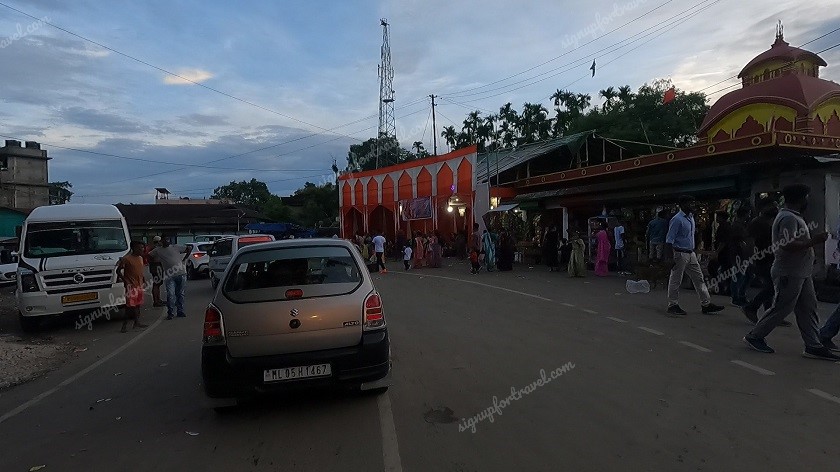
We swiftly crossed the pothole-filled road of Dawki and darted towards the border to make use of the remaining daylight. Around 300 meters from the border, the road deteriorates into stone and gravel. We parked our scooter near the immigration office and entered our details on the visitor register with BSF.
Man, what a feeling it was to finally be at the border. Contrary to the border at Bumla, this one is a friendly border and visitors have the freedom to walk up to the zero-point pillar. After the customary picture taking and video making, we bade goodbye to the place after spending about 15-20 mins there.
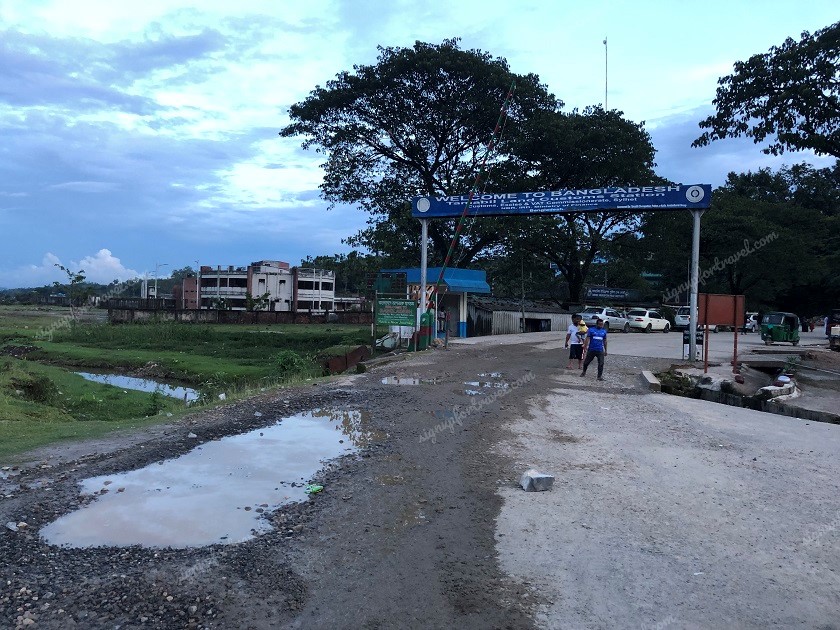
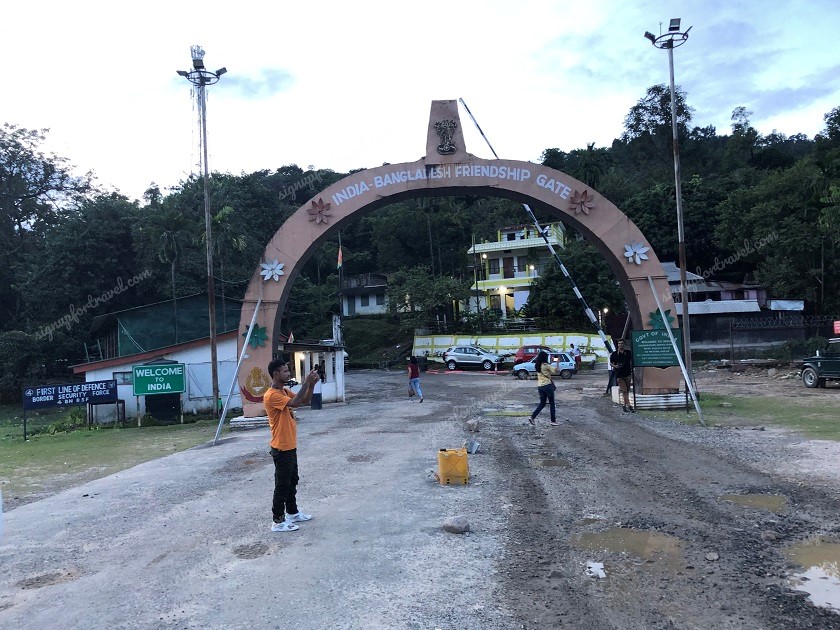
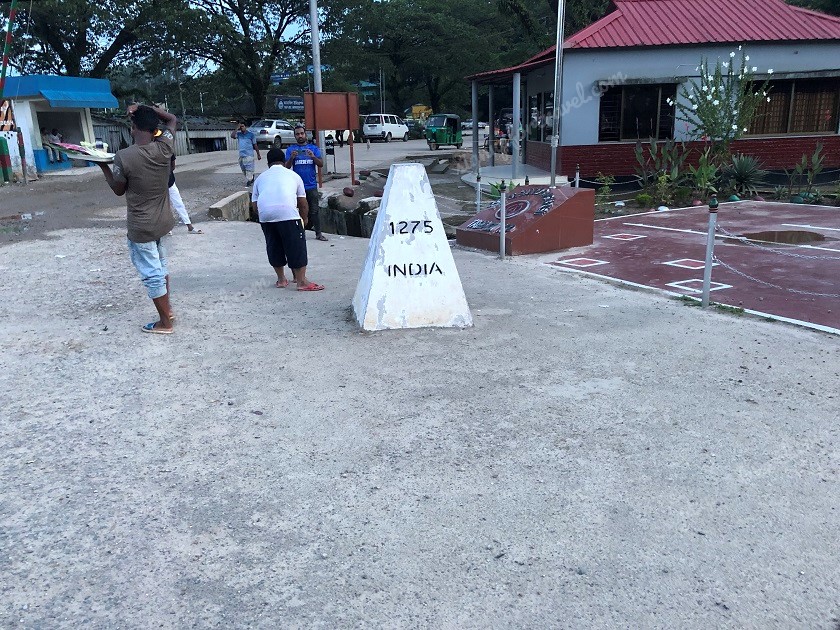
On the way back, our scooter became thirsty and therefore had to stop and refill the small petrol tank of the scooter at a petrol pump near the border.
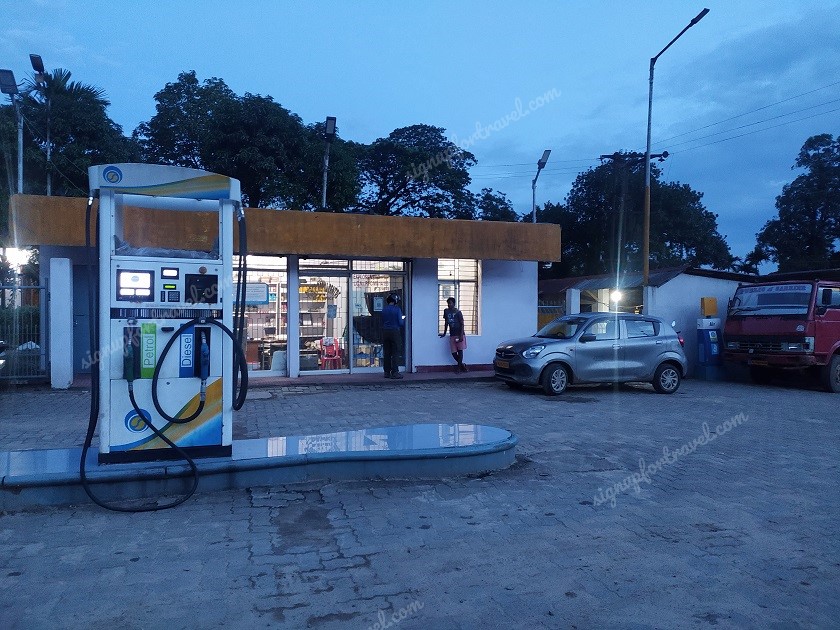
End of Day 8
After crossing the Umngot River, it was a straight 20 km dash over the dreadful roads all the way to our guest house. It was a long day and after a simple dinner, we went to sleep.

